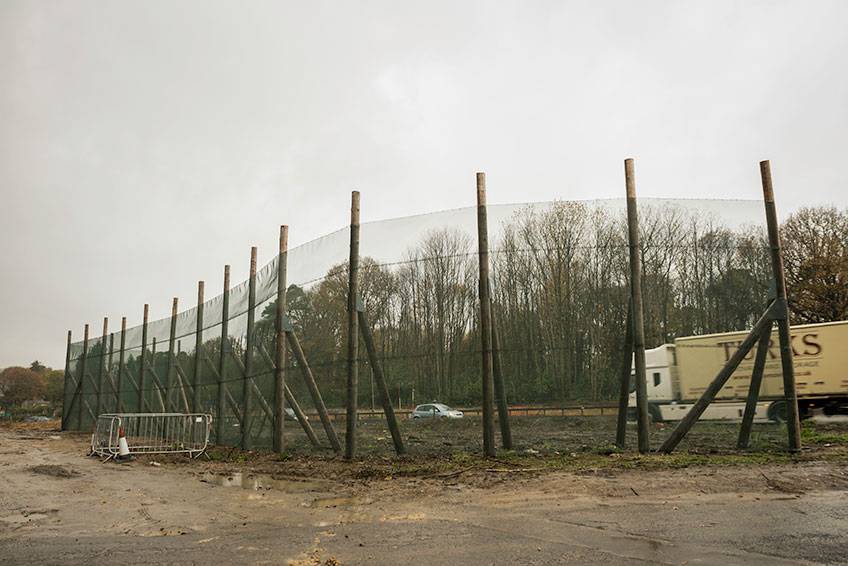They are a familiar sight at twilight, ghosting silently through the night sky in search of insects.
The bat, our nation’s only winged mammal, has been an object of mystery, myth and curiosity to humans for millennia.
And despite their apparent abundance this year, our local populations have been in decline for more than a century.
So with woodland clearance from the A21 widening scheme presenting a threat to the creature’s habitat, the animal – most likely the widespread pipistrelle species – has been given a little help from the highways’ people.
A huge ‘bat screen’ has been erected on the side of the Hastings-bound carriageway at Pembury Walks to guide them out of the way of traffic.
Bats use echolocation to get around and the loss of trees meant they could have strayed into the path of moving vehicles on the busy A-road.
The problem was identified by the contractor Balfour Beatty and with Highways England found a solution.
A spokesman for Balfour Beatty said: “Some of the woodland has been cut back and it was felt the bats might be exposed as they use physical objects like trees to get about by echolocation.
“The fear was that they might end up flying into the path of the traffic. So the screen presents a large physical echo board which guides them away from danger.”
According to the Bat Conservation Trust, bat populations have declined considerably over the last century.
A trust spokesman said: “Bats are still under threat from building and development work that affects roosts, loss of habitat, the severing of commuting routes by roads and threats in the home including cat attacks, flypaper and some chemical treatments of building materials.
“Other potential threats can include wind turbines and lighting if they are sited on key bat habitat on near roosts.
“Bats using a building are directly threated by building works if they are present while the work is underway or if a demolition is taking place.
“If bats disturbed at a particularly sensitive time of year, during hibernation in winter or when baby bats are born and raised in the summer, it can have hugely detrimental impacts on local bat populations.”
BAT FACTS
All British bats eat insects. Each species has its favourite types and hunts them in its own special way. Most insects are caught and eaten in mid-air, though bats sometimes find it easier to hang up to eat larger prey. All bats have very big appetites, because flying uses up lots of energy. A common pipistrelle can eat over 3,000 tiny insects in a single night. Fishermen, plagued by biting midges on the bank in the summer months, welcome the arrival of bats at twilight as they eat vast quantities of the insect.
THE UK’S BREEDING SPECIES ARE:
Alcathoe bat; barbastelle; Bechstein’s bat; Brandt’s bat; brown long-eared bat; common pipistrelle; Daubenton’s bat; greater horseshoe bat; grey long-eared bat; Leisler’s bat; lesser horseshoe bat; Nathusius’ pipistrelle; Natterer’s bat; noctule; serotine; soprano pipistrelle; and whiskered bat.








